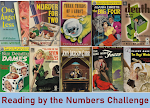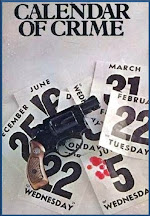Unnatural Ends (2023) by Christopher Huang
Early 1900s, Britain. Sir Lawrence Linwood and his wife were unable to have children of their own, so they adopted three children: Alan, Roger, and Caroline. Linwood was a stern and demanding taskmaster--expecting his children to compete against each other and excel in every contest and "experiment" that he put before them. By any means, necessary. Just so long as they were winners. The Linwoods have since grown and gone forth into the world to prove how successful they can be there--Alan is an archaeologist with a exhibition now on display in London. Roger, a successful military man during WWI, now designs his own automobile engines and aircraft. He hopes to run his own company. Caroline is a journalist in Paris.
They've all been called home to Linwood Hall--Sir Lawrence Linwood is dead. When they arrive home, they find that their father is not just dead--he was found beaten to death with an ancient mace and, rather than Alan inheriting outright as the eldest child had every right to expect, Sir Lawrence's will divides the estate equally among the three children...unless one of them successfully solves their father's murder. In that event, the clever sleuth will inherit everything. So, even in death, Linwood has found a way to challenge them and try to set them against each other. The inspector in charge of the case reluctantly allows them to view the evidence--he doesn't want to go against the victim's last wishes, after all. But he's surprised when they start finding clues that he and his men missed. Like the hidden grate in Sir Lawrence's study where it looks like a legal document was burned. Was there another will? And the pocket watch that was dropped in the area below the study's window. And the secret passages that riddle the house.
Alan, Roger, and Caroline make little headway on the mystery though until a strange woman visits Sir Lawrence's final resting place with a show of obvious contempt. As the children begin searching for the woman, they find evidence of other women connected to their father and indications that everything they've been told about their adoptions may be false. But what do these women have to do with Sir Lawrence's murder? And why does all the evidence uncovered by the police seem to point to their mother--a broken woman who would never have done anything against Sir Lawrence's wishes, let alone to the man himself? Are the Linwoods up to this final challenge? Or will someone get away with murder?
This is the second book by Huang that I have read and enjoyed. Last year I read A Gentleman's Murder on the suggestion of my friend Ryan Groff (for a challenge based on suggestions from friends). I was so glad he drew the book to my attention. So when this Huang title came up as a possibility in the Book Challenge by Erin bonus round I knew I had to try it. I'm glad I did. Huang writes such good historical mysteries and they're set right in the Golden Age period which is all the more delightful for this GAD fan. The set-up is good--it was interesting having the victim directing his heirs to find his killer and giving them extra incentive to do so.
As a mystery, it has an intriguing premise but I have to say that Huang did not deliver on mystification (at least not for me). I saw where this was going before I was half-way through the book. There are a couple of phrases that were used repeatedly that just clued me in to the motive and once I had that, the solution followed. That's not to say that I knew every twist and turn, because I didn't. And that's not to say that it was worth reading to the end, because it was. The characters of the three Linwoods are great and when I finished I wanted there to be more to tell me what happened to Alan, Roger, and Caroline next. So--Huang left me wanting more and that's always a good thing. ★★★★
First line (Prologue): In the beginning was Linwood Hall, and Linwood Hall was the world.
First line (Part 1): There were better reasons for coming home, Alan supposed, than Father's funeral.
Last line: Light restored, the four of them made their way back up the path to the house above.
***********************
Deaths = 8 (one beaten; two stabbed one shot; two poisoned; one natural; one fell from height)











.jpg)





.jpg)







.jpg)



















